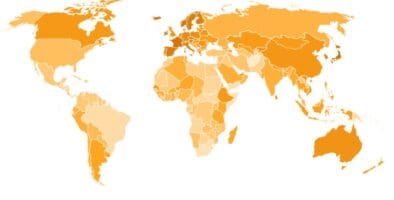Fossil
is no longer
competitive
Fossil Fuels Are No Longer Competitive
Renewable electricity is now the cheapest form of energy, and electric vehicles and heating cheaper than fossil. Demand for fossils is to peak in 2025, and drastically decline after 2030.
Controlling fire is what distinguished humans from other species. It allowed us to survive and thrive in colder climate. Making a fire is age-old technology.
When using fire in technological applications, transforming heat energy to movement, the efficiency is limited by the laws of thermal physics to roughly 35%. Electricity in contrast, has an energy-to-movement efficiency of 100%.
Making a fire might be romantic, but is not very efficient.
Incentives, investments and mass production have made renewable solar and wind electricity the cheapest form of energy in human history:

Development of renewable electricity costs: cost for solar PV are now 8 times les than in 2010; wind electricity 4 times less
Market dynamics and increasing investments are expected to further decrease cost by 50% over the next 5-10 years

Solar and wind are now the cheapest form of elctricity generation – at 40% of the cheapest fossil alternative (combined heat-power gas turbines).
With decreasing cost of renewable and battery technology, renewables are cheaper even when accounting for storage
New renewable technology – generation, heating, and transport – is now cheaper than the fossil-fired equivalents, by a factor of 2 or more.
Investments driven by market dynamics are set to further improve technology and reduce costs in the near future – by around 50% in the next 5 years (batteries) to 10 years (renewable generation).
The economic argument is set – and reflected in today’s market developments:

The efficiency of an internal combustion engine is limited by the laws of thermo-physics, and can reach a maximum of 35%, In ICE cars, between 20-25% of the energy contained in the gasoline is turned into moving energy.
Electric motors directly convert energy to movement, and can reach up to 100% efficiency.

The operating cost of a heating devices depends on a set of variables – electricity generation cost, taxes and/or tax breaks on fossil energy, and VAT.
In the worst case, heat pump operating costs are comparable to fossil-fired heating systems. Under normal circumstances, heat pump’s operating costs are significantly lower due to the higher factor between energy input and energy output.

Battery cost have been reduced 4-fold since 2010, Given the global investment push into battery technology, costs are expected to decline further significantly. Making renewable electricity and electric road transport even more competitive.
.
Renewable energy is now the cheapest from of energy in human history – at a cost of 40% of the cheapest form of fossil electricity generation (gas). The efficiency of electric appliances is between 2-5 times greater than fossil counterparts.
Fossil fuels are no longer competitive.
The International Energy Agency (IEA) predicts that global demand for oil will peak between 2025 and 2027 due to cheaper alternatives. When demand starts to decline, prices start to fall. The demand-supply-equitation kicks in: over-capacity will lead to price competition, further putting pressure on revenues and profit margins.
It is highly likely that demand for, and revenues generated from fossils will decline somewhere between significantly and drastically after 2030.

Under a business-as-usual scenario, the deployment and development of renewables and electricity-powered consumption is expected to start biting noticeably into fossil demand by 2028, accelerating after 2030 due to market dynamics.
It should be note that past projections tended to underestimated the power of economics at the base of the rapid deployment of renewables.

Future energy mix projection taking into account potential policies combatting climate change. The proportion of fossil energy is expected to start decline after 2026, with accelerating pace of deployment of renewables after 2028. Depending on the quality of climate policies (incentive and financing frameworks for renewables, taxing of fossils), renewables will cover 199% of all energy needs between 2032 to 2037
Investors, beware: fossils are no longer competitive
- The markets for renewables and electricity-powered consumption have reached momentum that is now unstoppable. It’s simple economics: Renewables are – by a large margin – more efficient and cheaper.
- Market developments flush more investments in R&D, production and installation – everything renewable and electric will become even cheaper in the near future. The outlook suggests half the cost in the next 10 years, redoubling market dynamics.
- As a consequence, fossils and fossil-powered consumption are no longer competitive. Demand for oil will peak between 2025 and 2027, and therefore start to decline, slowly at first, and faster over time. Demand, revenues and profits for and from fossils will decline in accordance.
- The renewable transition will happen faster than the “mainstream” is currently expecting.
- Demand for oil will decline after 2025. And drastically so after 2030 – even assumed a business-as-usual scenario with no or very limited climate change-forced policies.
- Policies and targets induced by climate change (e.g. incentives and financing framework for renewables, and taxing of fossils) are likely further accelerating market dynamics. It is highly likely that the demand for fossils will be a fraction of todays, and maybe even close to zero by 2040.
For mor information, download the report: Fossil Fuels are no longer competitive
(PDF, 18 pages)



